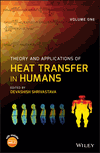Generating Blood Vasculature for Bioheat Computations
Summary
The authors illustrate how tree-based synthetic vasculatures can be efficiently generated. They focus on vasculatures in 3D domains, and show how resulting vasculatures can depend on geometry, including regions of obstruction. They outline a general framework that can be used to generate a wide variety of vasculatures. To illustrate how this framework can be used, specific criteria and constraints are selected, and expressed as formulas in terms of the vascular network and geometry. They then go into some detail with one example based on minimizing total blood volume in the vasculature given physical constraints of Navier-Stokes fluid equations and fixed blood pressure available to drive the flow. In the examples, they show how vasculatures iteratively grow with this method, and the models resulting from different input geometries and physical conditions. In the summary, they describe how these synthetic vasculatures can be used in bioheat models.



